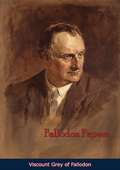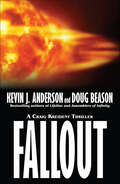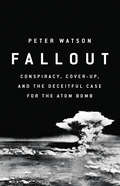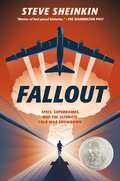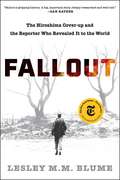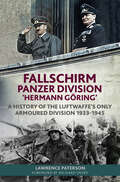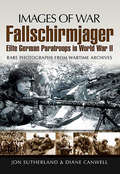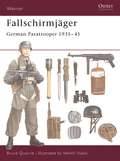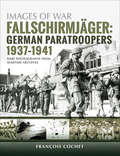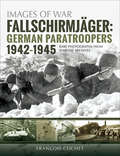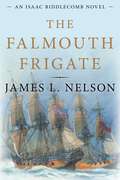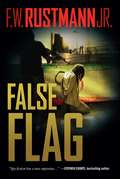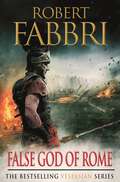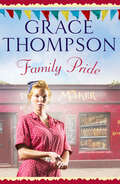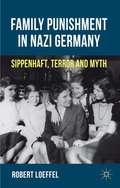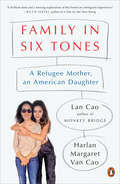- Table View
- List View
Fallodon Papers
by Viscount Grey of FallodonA slim volume of essays by Viscount Grey of Fallodon, first published in 1926, this book is a collection of seven addresses he gave on subjects such as reading, nature, and public life. The essays range from 1919-1924.In these stimulating and delightful papers, written at his ancestral home at Fallodon in Northumberland, England’s foreign minister tells of those aspects of life from which he drew refreshment and lasting pleasure. Included is his famous essay on “The Fly-Fisherman,” which appeared in this book for the first time in 1926.The Viscount’s essays were presented as lectures and as he was unable to read from a manuscript, owing to poor eyesight, he delivered his thoughts with no notes at all, relying on a shorthand writer to record the words for print.Full essay list: “The Pleasure of Reading;” “Pleasure in Outdoor Nature;” “Recreation;” “Some Thoughts on Public Life;” “Waterfowl at Fallodon;” “The Fly-Fisherman;” “Wordsworth’s ‘Prelude’.”Beautifully illustrated throughout with art deco woodcuts.An unmissable addition to any World War I library.
Fallout
by Todd StrasserWhat if the bomb had actually been dropped? What if your family was the only one with a shelter? In the summer of 1962, the possibility of nuclear war is all anyone talks about. But Scott's dad is the only one in the neighborhood who actually prepares for the worst. As the neighbors scoff, he builds a bomb shelter to hold his family and stocks it with just enough supplies to keep the four of them alive for two critical weeks. In the middle of the night in late October, when the unthinkable happens, those same neighbors force their way into the shelter before Scott's dad can shut the door. With not enough room, not enough food, and not enough air, life inside the shelter is filthy, physically draining, and emotionally fraught. But even worse is the question of what will -- and won't -- remain when the door is opened again. Internationally best-selling author Todd Strasser has written his most impressive and personal novel to date, ruthlessly yet sensitively exploring the terrifying what-ifs of one of the most explosive moments in human history.
Fallout (The Craig Kreident Thrillers)
by Kevin J. Anderson Doug BeasonThey call themselves Eagle’s Claw, one of the most extreme militia groups in the United States. They have infiltrated the Device Assembly Facility at the Nevada Nuclear Test Site. And the most frightening display of nuclear terrorism is about to unfold. Only the Nebula-nominated collaboration of Kevin J. Anderson and Doug Beason could masterfully blend hard-as-nails high technology with hard-driving intrigue to deliver such an explosive thriller. FBI Special Agent Craig Kreident—the unforgettable hero from Virtual Destruction—returns in this breathtaking tour de force of terrorism, cutting-edge technology, and raw emotional power.
Fallout: Conspiracy, Cover-Up, and the Deceitful Case for the Atom Bomb
by Peter WatsonThe justification for the atomic bomb was simple: it would defeat Hitler and end the Second World War faster, saving lives. The reality was different.Fallout dismantles the conventional story of why the atom bomb was built. Peter Watson has found new documents showing that long before the Allied bomb was operational, it was clear that Germany had no atomic weapons of its own and was not likely to. The British knew this, but didn't share their knowledge with the Americans, who in turn deceived the British about the extent to which the Soviets had penetrated their plans to build and deploy the bomb.The dark secret was that the bomb was dropped not to decisively end the war in the Pacific but to warn off Stalin's Russia, still in principle a military ally of the US and Britain. It did not bring a hot war to an abrupt end; instead it set up the terms for a Cold one to begin.Moreover, none of the scientists recruited to build the bomb had any idea that the purpose of the bomb had been secretly changed and that Russian deterrence was its new objective.Fallout vividly reveals the story of the unnecessary building of the atomic bomb, the most destructive weapon in the world, and the long-term consequences that are still playing out to this day.
Fallout: Nuclear Diplomacy in an Age of Global Fracture
by Grégoire MallardMany Baby Boomers still recall crouching under their grade-school desks in frequent bomb drills during the Cuban Missile Crisis—a clear representation of how terrified the United States was of nuclear war. Thus far, we have succeeded in preventing such catastrophe, and this is partly due to the various treaties signed in the 1960s forswearing the use of nuclear technology for military purposes. In Fallout, Grégoire Mallard seeks to understand why some nations agreed to these limitations of their sovereign will—and why others decidedly did not. He builds his investigation around the 1968 signing of the Nuclear Nonproliferation Treaty (NPT), which, though binding in nature, wasn’t adhered to consistently by all signatory nations. Mallard looks at Europe’s observance of treaty rules in contrast to the three holdouts in the global nonproliferation regime: Israel, India, and Pakistan. He seeks to find reasons for these discrepancies, and makes the compelling case that who wrote the treaty and how the rules were written—whether transparently, ambiguously, or opaquely—had major significance in how the rules were interpreted and whether they were then followed or dismissed as regimes changed. In honing in on this important piece of the story, Mallard not only provides a new perspective on our diplomatic history, but, more significantly, draws important conclusions about potential conditions that could facilitate the inclusion of the remaining NPT holdouts. Fallout is an important and timely book sure to be of interest to policy makers, activists, and concerned citizens alike.
Fallout: Spies, Superbombs, and the Ultimate Cold War Showdown
by Steve SheinkinNew York Times bestselling author Steve Sheinkin presents a follow up to his award-winning book Bomb: The Race to Build--and Steal--the World's Most Dangerous Weapon, taking readers on a terrifying journey into the Cold War and our mutual assured destruction. <p><p> As World War II comes to a close, the United States and the Soviet Union emerge as the two greatest world powers on extreme opposites of the political spectrum. After the United States showed its hand with the atomic bomb in Hiroshima, the Soviets refuse to be left behind. <p><p>With communism sweeping the globe, the two nations begin a neck-and-neck competition to build even more destructive bombs and conquer the Space Race. In their battle for dominance, spy planes fly above, armed submarines swim deep below, and undercover agents meet in the dead of night.The Cold War game grows more precarious as weapons are pointed towards each other, with fingers literally on the trigger. The decades-long showdown culminates in the Cuban Missile Crisis, the world's close call with the third—and final—world war.
Fallout: The Hiroshima Cover-up and the Reporter Who Revealed It to the World
by Lesley M.M. BlumeNew York Times bestselling author Lesley M.M. Blume reveals how one courageous American reporter uncovered one of the deadliest cover-ups of the 20th century—the true effects of the atom bomb—potentially saving millions of lives. Just days after the United States decimated Hiroshima and Nagasaki with nuclear bombs, the Japanese surrendered unconditionally. But even before the surrender, the US government and military had begun a secret propaganda and information suppression campaign to hide the devastating nature of these experimental weapons. The cover-up intensified as Occupation forces closed the atomic cities to Allied reporters, preventing leaks about the horrific long-term effects of radiation which would kill thousands during the months after the blast. For nearly a year the cover-up worked—until New Yorker journalist John Hersey got into Hiroshima and managed to report the truth to the world. As Hersey and his editors prepared his article for publication, they kept the story secret—even from most of their New Yorker colleagues. When the magazine published &“Hiroshima&” in August 1946, it became an instant global sensation, and inspired pervasive horror about the hellish new threat that America had unleashed. Since 1945, no nuclear weapons have ever been deployed in war partly because Hersey alerted the world to their true, devastating impact. This knowledge has remained among the greatest deterrents to using them since the end of World War II. Released on the 75th anniversary of the Hiroshima bombing, Fallout is an engrossing detective story, as well as an important piece of hidden history that shows how one heroic scoop saved—and can still save—the world.
Fallout: The Hot War
by Harry TurtledoveThe novels of Harry Turtledove show history balancing on single moments: One act of folly. One poor decision. One moment of rage. In this astounding new series, the unthinkable has come to pass. The Cold War turns hot--and the United States and the Soviet Union unleash their nuclear arsenals upon each other. Millions die. Millions more are displaced. Germans battle side by side with Americans, Polish freedom fighters next to Russian fascists. The genie is out of the bottle. And there's no telling what fresh hell will come next. At the heart of Fallout are Harry Truman and Josef Stalin. Even as Joe McCarthy rises in power, the U.S. president is focused elsewhere, planning to cut off the head of the Soviet threat by taking out Stalin. It's a daring gambit, but the Soviets have one of their own. Meanwhile, Europe's weak sisters, France and Italy, seem poised to choose the winning side, while China threatens to overrun Korea. With Great Britain ravaged and swaths of America in ruins, leaders are running out of options. When the United States drops another series of bombs to slow the Russian advance in Europe, Stalin strikes back--with horrifying results. These staggering events unfold through the eyes of a sprawling cast of characters: a Holocaust survivor in a displaced persons camp in Washington; the wife of a bomber pilot and her five-year-old daughter starting a new existence; a savage Soviet fighter waging war by his own rules; a British pub owner falling in love with an American pilot. In the masterly hands of Harry Turtledove, this epic chronicle of war becomes a story of human struggle. As the armies of the world implode, the next chapter will be written by the survivors--those willing to rise up for an uncertain future. PRAISE FOR HARRY TURTLEDOVE "Turtledove is the standard-bearer for alternate history."--USA Today Bombs Away "Turtledove's thorough research and grounded imagination work to create a frighteningly realistic past where world leaders act out of desperation and fatalism, and a large cast of common folk suffer the consequences. . . . The vicarious sense of eschatological dread is always powerful."--Booklist Last Orders "All quite plausible . . . Turtledove's focus on the characters serves to fill out the big picture with patient, nitty-gritty detail. . . . Armchair warriors will have much to ponder."--Kirkus Reviews Two Fronts "A you-are-there chronicle of battle on land and sea and in the air."--Tor.com Coup d'Etat "This is what alternative history is all about."--Historical Novels ReviewFrom the Hardcover edition.
Fallschirm-Panzer-Division 'Hermann Göring’: A History of the Luftwaffe's Only Armoured Division, 1933-1945
by Lawrence PatersonA history of the development and role during World War II of the private army of the Nazi Luftwaffe&’s commander-in-chief. In the early years of the Third Reich, Hermann Göring, one of the most notorious leaders of the Third Reich, worked to establish his own personal army to rival Himmler&’s SS and Reichswehr. The result: a private Prussian police force which grew into one of the most powerful armored units in Nazi Germany&’s Wehrmacht. This unit fought throughout the Second World War, meeting Anglo-American forces in vicious battles across the European theatres of Tunisia, Sicily, and Italy before finally being defeated by the Red Army on the Eastern Front. This book incorporates technical details of these battles with the turbulent politics and Machiavellian maneuvering of Hitler&’s inner circle, giving military-history enthusiasts fresh insights into the development and role of this unusual division through the war. Drawing on first-hand accounts and extensive archive material, World War II historian Lawrence Paterson presents a comprehensive and unbiased history of the establishment of the famous 1st Fallschirm-Panzer Division.Praise for Fallschirm–Panzer Division &‘Hermann Göring&’ &“A fine study, well written, thoroughly researched and highly readable.&” —The Journal of Military History &“An important contribution to an otherwise little-known but fascinating unit.&” —History of War &“For anybody interested in the role of this elite unit, it is a &‘must read&’ and as part of an understanding of the campaigns it fought, it offers a wider perspective of its interaction with adjoining units.&” —Michael McCarthy, Battlefield Guide
Fallschirmjager: Rare Photographs from Wartime Archives (Images of War)
by Diane Canwell Jon SutherlandThe photos in this book are taken from an unpublished album that belonged to a member of the elite German Paratroopers. First Sgt Wilhelm Plieschen served with Fallschirmjager Machine Gun Battalion 7, which suffered very heavy losses in the invasion of Crete, then saw bloody conflict as Hitlers "Fire-fighters" on the Russian Front and later put up fierce resistance in places such as Monte Casino. The revealing images that Jon Sutherland has compiled for us depict these struggles in dramatic detail, ranging from photographs taken en route to Crete of the paratroopers in a JU52 to 20 May 1941, when Plieschen was dropped over Crete. Some show other paratroopers drifting down and others feature formations of German aircraft amidst flak.Additionally, Sutherland has included amazing images depicting Germans on the deck of the badly damaged and abandoned HMS York in Souda Bay. There are photographs showing Major Erich Schulz decorating paratroopers on Crete and the then Commander of the Fallschirmjager, General Kurt Student inspecting the troops. We later pay witness to Plieschen in Russia, where outstanding rare photos of paratroopers in heavy winter camouflage clothing portray the men enduring the heavy fighting that occurred in the region.
Fallschirmjäger
by Velimir Vuksic Bruce QuarrieFew of the combatants of World War II have captured the imagination as compulsively as the Fallschirmjäger. Boldness and courage were vital characteristics in the rigorous selection process, and their training was highly demanding. Hitler's airborne troops were involved in some of the most daring actions of the whole war; from the 1940 assault on Eben Emael and the invasion of Crete in 1941, to the rescue of Mussolini and the attempt on Tito's life. In addition, they saw service as elite line infantry in the key theatres of North West Europe, North Africa and the Eastern Front. This title looks at the life and experiences of the average Fallschirmjäger, and includes first-hand accounts from different theatres and periods of the war.
Fallschirmjäger: German Paratroopers, 1937-1941 (Images of War #19)
by François Cochet&“[An] excellent volume . . . The training and uniforms of this elite fighting force are well-covered, as are descriptions of the battles fought.&” —Army Rumour Service As elite troops, the German Fallschirmjäger (paratroopers) were regularly engaged in front line combat during the Second World War. Their famed actions such as the fighting in Scandinavia, the taking of the Belgian fortress Eden-Emal in May 1940, and the Battle for Crete just a year later, have given them the reputation of being determined, courageous and loyal soldiers. This book covers the early years of the Fallschirmstruppen (paratroop units) before the beginning of the war, until the height of their successes in 1941, after which the Fallschirmjäger were more often deployed in a more &“traditional&” way, even though high-risk actions (such as at Monte Cassino, the Gran Sasso Raid) allowed them to reconnect once more with their glorious past. &“The very popular Images of War series has established a format with a large number of rare photographs in each book and clear concise text supporting the photographic selection. This new addition follows the proven format to provide a graphic history and analysis of German paratroopers in WWII. Highly Recommended.&” —Firetrench &“Model figure hobbyists and diorama builders can find lots of visual inspirations for future projects.&” —Toy Soldier & Model Figure
Fallschirmjäger: German Paratroopers, 1942-1945 (Images of War)
by François CochetThe second volume following the World War II exploits of the famed German parachute unit—from the battle of Crete to the surrender of the Third Reich. As elite troops, the German Fallschirmjäger (paratroopers) were regularly engaged in front line combat during the Second World War. Their famed actions such as the fighting in Scandinavia, the taking of the Belgian fortress Eden-Emal in May 1940, and the Battle for Crete just a year later, have given them the reputation of being determined, courageous and loyal soldiers. This book continues the pictorial history of the Fallschirmjäger, focusing on the period following the bloody Battle for Crete. Used as elite infantry, first in the USSR and then in Africa, the Fallschirmjäger were able to reconnect with their glorious past, whether in Italy or on the Greek Islands, as they jumped from their Ju 52s to engage the enemy. Their hard fighting in Italy helped to cement the legend of &“the Green Devils,&” with the British General Harold Alexander describing them as &“tenacious, highly trained men, hardened by their many actions and combats.&” However, during the fighting in Normandy, the Ardennes and on the Eastern Front, the number of veterans decreased, meaning it was the young German paratroopers who finally surrendered the Third Reich on 8 May 1945. &“François Cochet&’s two-volumes in the Images of War series are not only an excellent introduction to this force and its combat history in the war, but also much, much more.&” —Avon Napoleonic Fellowship
Fallujah Redux
by William F. Mullen Daniel R. GreenThe city of Fallujah, Iraq will long be associated with some of the worst violence and brutality of the Iraq war. The battles to retake the city from insurgent fighters in 2004 have already indelibly carved its name into the historic annals of the U.S. military and occupy a revered place in the storied history of the United States Marine Corps. Initially occupied by U.S. forces in 2003, it eventually served as the headquarters for numerous insurgent groups operating west of Baghdad, including al-Qaeda in Iraq and its leader Abu Musab al-Zarqawi, until forcibly retaken at the end of 2004. Once the city was finally cleared, U.S. forces concentrated on trying to prevent it from returning to insurgent control by waging a counter insurgency campaign against both nationalist and extremist Islamist insurgent forces. It was a long, frustrating and, at times, brutal fight for control of the population with the eventual goal of setting the conditions for eventual Iraqi Government control and enabling U.S. forces to leave. Even though Coalition Forces were winning tactically, the initial policies of the Coalition Provisional Authority, which had deeply alienated the Sunni Arab population, negative press coverage of the ongoing violence, as well as the often clumsy and ineffective efforts of the developing Iraqi Security Forces served to make winning over the population a difficult process at best. The people of the area still strongly supported the nationalist insurgents and, although they often allied with the Islamists to push Coalition Forces out of Iraq, were frequently more terrified of the extremist Islamist insurgents than supportive. There seemed to be little U.S. forces could do to change the situation. By the middle of 2007, four years after the initial invasion of Iraq, the city of Fallujah and its surrounding countryside remained mired in a seemingly intractable cycle of violent action and counteraction between government security forces, assisted by U.S. forces, and the various insurgent groups. It was an unstable and chaotic time. It had even gotten to the point that some on the coalition side were beginning to wonder if Fallujah was being lost all over again. All of this began to change in 2007.Progress up to that point had been slow, difficult to assess, and occurred in fits and starts. The hardest aspect of the counter-insurgency effort was maintaining a sense of enduring security for the population so that Iraqis would not have to live in constant fear of retribution from the different insurgent groups. Lacking an adequate Iraqi partner, this task was beyond the resources of U.S. forces in Anbar Province - something needed to change. Beginning in June 2007, local security conditions in Fallujah were fundamentally altered due to a concerted U.S. pacification campaign in the city, increased cooperation from local tribes, and greater efforts by Iraqi Security Forces. This campaign took advantage of the tide of the Al Anbar Awakening Movement that was sweeping the province from west to east as the tribes in the area and the broader Sunni Arab community began to turn against al-Qaeda in 2006 and 2007. As this movement gained momentum, Fallujah's residents were waiting for it to push eastward in order to help them eliminate al-Qaeda from their own communities. Even though the local population had not yet risen up against the terrorist group, they were keen to do so and needed the help of U.S. forces. The campaign described in this book gave them this opportunity.
Falmouth Frigate: An Isaac Biddlecomb Novel (Isaac Biddlecomb Novels)
by James L. NelsonThe year 1777 is bleak indeed for the cause of American Independence, with the British army twice defeating Washington and taking the capital city of Philadelphia and the Royal Navy sweeping aside the defenses of the Delaware Bay.And for Captain Isaac Biddlecomb and the men of the half-built frigate Falmouth, things are direr still. After managing to slip through a British blockade, they find themselves trapped in a desolate harbor on the New Jersey coast and menaced not by the British but by the outlaw bands that terrorize the countryside and see Falmouth as a potentially valuable prize. Deserter Angus McGinty steals Biddlecomb&’s most potent weapon, the captured British sloop Sparrowhawk, leaving him to face the ruthless Pine Robbers on his own, with only his diminished crew and the near-useless local militia to help.Meanwhile, Virginia Biddlecomb, trapped in occupied Philadelphia, sees her chance to play a clandestine role in the fight. In the course of her activities, however, she lets slip information that will put her husband, his ship, and his crew in mortal danger, leading to a desperate race to get the unwieldy Falmouth to a place beyond the reach of the Royal Navy.
False Flag
by F. W. RustmannA young, female CIA officer under non-official cover has been snatched off of the streets of Beirut by Hezbollah. <P><P>This is the kind of situation that CIA's legendary Deputy Director of Operations Edwin Rothmann needs solved fast—but he can't involve the agency. Instead, he enlists the renegade Ft. Lauderdale outfit he refers to as "CIA, Inc." headed by former CIA case officer Mac MacMurphy. <P><P>As the kidnapped officer faces a battle of wits with her mysterious interrogator, MacMurphy and his team track down a former CIA asset who may hold the key to infiltrating the hostage situation before it gets out of hand.
False Friends (Badgers Brook Saga)
by Grace ThompsonLowri Vaughan is in need of refuge – where better to find it than Badgers Brook?Rumours abound that her father is a fraudster, maybe even a murderer, but while he is indeed locked up, Lowri and her mother know he’s an innocent man. Some gossip-seeking townsfolk work on currying Lowri’s favour, hoping she will drop her guard. Sorting those who can’t be trusted from those that can is tough work for Lowri, but that’s perhaps the least of her worries – she must secure her father’s release, and fast…The moving, final book in Grace Thompson's much-loved Badgers Brook saga series, perfect for fans of Anna Jacobs and Ellie Dean.
False God of Rome: Tribune Of Rome, Rome's Executioner, False God Of Rome (Vespasian #3)
by Robert FabbriVespasian's mission will lead to violence, mayhem, and theft—and in the end, to a betrayal so great it will echo through the agesVespasian is serving as a military officer on the outskirts of the Roman Empire, suppressing local troubles and defending the Roman way. But political events in Rome—Tiberius's increasingly insane debauchery, the escalating grain crisis—draw him back to the city. When Caligula becomes Emperor, Vespasian believes that things will improve. Instead, he watches the young emperor deteriorate from Rome's shining star to a blood-crazed, incestuous, all-powerful madman. Lavish building projects, endless games, public displays of his relationship with his sister, Drusilla, and a terrified senate are as nothing to Caligula's most ambitious plan: to bridge the bay of Neapolis and ride over it wearing Alexander's breastplate. And it falls to Vespasian to travel to Alexandria and steal it from Alexander's mausoleum.
Falsehood In War Time: Containing An Assortment Of Lies Circulated Throughout The Nations During The Great War
by Arthur PonsonbyFalsehood in War Time by Arthur Ponsonby is a compelling and incisive exploration of the use of propaganda and deceit in the conduct of war. First published in 1928, this landmark work exposes the deliberate fabrications, exaggerations, and manipulations employed by governments to justify war, sustain public support, and demonize the enemy. Ponsonby, a British politician and pacifist, meticulously documents the lies told during World War I, revealing the dangerous power of propaganda in shaping public perception and policy.Ponsonby’s book is a groundbreaking critique of the ethics of war-time communication, challenging the widely held belief that truth is the first casualty of war. Through a careful examination of official statements, newspaper reports, and popular myths, he uncovers how governments on both sides of the conflict spread falsehoods to rally their populations and maintain morale. From fabricated atrocity stories to exaggerated enemy threats, Ponsonby shows how these lies served to inflame passions and perpetuate the horrors of war.Falsehood in War Time is not just a historical analysis but a timeless warning about the dangers of unchecked propaganda and the ease with which public opinion can be manipulated in times of crisis. Ponsonby argues that understanding these falsehoods is crucial to preventing future conflicts and fostering a more honest and just international order.This book is essential reading for historians, political scientists, and anyone interested in the ethics of war and the role of media in shaping public discourse. Ponsonby’s work remains highly relevant in the modern world, where the battle for truth in the face of propaganda continues to be a critical issue.Falsehood in War Time is a powerful reminder of the moral responsibility of those who wield influence over public opinion and the importance of vigilance in discerning truth from falsehood in times of conflict.
Familiar Stranger
by Sharon SalaRediscover one of Sharon Sala's fan‐favorite romances from the classic miniseries A Year of Loving Dangerously, where passion rules and nothing is what it seems… THE AGENT: SPEAR's top gun, a man deeply shrouded in mystery. THE MISSION: To find his heart again before he fights his last battle. THE SOUL‐WRENCHING REUNION: Once he holds Cara Justice in his arms, will he ever let her go? David Wilson was the only man she had ever loved. The father of her child. The soldier Cara Justice believed dead. Now he was back, older, yet just as ruggedly handsome as he'd been years ago, when they'd said goodbye. Passion drove them together again, though duty tore them apart. For he had one final battle, and he would either fight to the death or return home a hero, ready to claim his woman once and for all. Originally published in 2001
Familiar Stranger: A Thrilling Military Romance (A Year of Loving Dangerously #12)
by Sharon SalaWill finding their lost love be the hardest battle he's fought so far? Find out in this thrilling military romance from New York Times bestselling author, Sharon Sala.Cara Justice lives a very content and happy life with her grown daughter and grandchildren. Until David Wilson, the soldier she believed dead, comes back to disrupt the calm in her life. David is the only man Cara has ever loved—he is also the father of her child. This time, tired of working secret missions for the U.S. military and wanting more in life, David comes to reconnect with his first and only love. And, although the passion drives them back together, his duty gets in the way… again. He chose his passion for military service forty years ago, but now he must fight a final mission for the happily ever after that both him and Cara deserve.Previously published.
Family Pride
by Grace ThompsonAll&’s fair in love, war, and baking . . . A saga of WWII Wales, a family feud, and an unexpected romance between rivals. Gilly Jenkins is the third generation to bake for her family firm. Also on Bread Street, in the same Welsh seaside town, is the rival bakery: Green&’s. As Gilly&’s grandfather falls ill, things look tough for the Jenkins—especially amid the outbreak of the Second World War. Hardship becomes the norm—and then an unexpected tragedy makes things worse. Meanwhile, their feud with the Greens intensifies, and a new arrival in the town causes consternation. Yet despite all, romance blossoms across the divide as Gilly falls for Paul, a dashing pilot and heir to the Green business. As secrets old and new come to light, can the families come to terms with the past? And can love really conquer all?
Family Punishment in Nazi Germany
by Robert LoeffelIn the Third Reich, political dissidents were not the only ones liable to be punished for their crimes. Their parents, siblings and relatives also risked reprisals. This concept - known as Sippenhaft - was based in ideas of blood and purity. This definitive study surveys the threats, fears and infliction of this part of the Nazi system of terror.
Family Resilience in the Military
by Lisa S. Meredith Megan K. Beckett Sarah O. Meadows Michael P. Fisher Laurie T. Martin Karen Chan Osilla Kirby Bowling Daniela GolinelliMost leaders in the Department of Defense (DoD) agree that family resilience is an important construct, yet DoD does not have a standard definition. The authors of this report review existing definitions of family resilience and offer a candidate definition for DoD use. They also review models of family resilience, identify key family resilience factors, and make recommendations for how DoD can manage family-resilience programs and policies.
Family in Six Tones: A Refugee Mother, an American Daughter
by Lan Cao Harlan Margaret Van Cao"A brilliant duet and a moving exploration of the American immigrant experience."--Ruth Ozeki, author of A Tale for the Time BeingA dual first-person memoir by the acclaimed Vietnamese-American novelist and her thoroughly American teenage daughterIn 1975, thirteen-year-old Lan Cao boarded an airplane in Saigon and got off in a world where she faced hosts she had not met before, a language she didn't speak, and food she didn't recognize, with the faint hope that she would be able to go home soon. Lan fought her way through confusion, and racism, to become a successful lawyer and novelist. Four decades later, she faced the biggest challenge in her life: raising her daughter Harlan--half Vietnamese by birth and 100 percent American teenager by inclination. In their lyrical joint memoir, told in alternating voices, mother and daughter cross ages and ethnicities to tackle the hardest questions about assimilation, aspiration, and family.Lan wrestles with her identities as not merely an immigrant but a refugee from an unpopular war. She has bigoted teachers who undermine her in the classroom and tormenting inner demons, but she does achieve--either despite or because of the work ethic and tight support of a traditional Vietnamese family struggling to get by in a small American town. Lan has ambitions, for herself, and for her daughter, but even as an adult feels tentative about her place in her adoptive country, and ventures through motherhood as if it is a foreign landscape.Reflecting and refracting her mother's narrative, Harlan fiercely describes the rites of passage of childhood and adolescence, filtered through the aftereffects of her family's history of war, tragedy, and migration. Harlan's struggle to make friends in high school challenges her mother to step back and let her daughter find her own way.Family in Six Tones speaks both to the unique struggles of refugees and to the universal tug-of-war between mothers and daughters. The journey of an immigrant--away from war and loss toward peace and a new life--and the journey of a mother raising a child to be secure and happy are both steep paths filled with detours and stumbling blocks. Through explosive fights and painful setbacks, mother and daughter search for a way to accept the past and face the future together.
